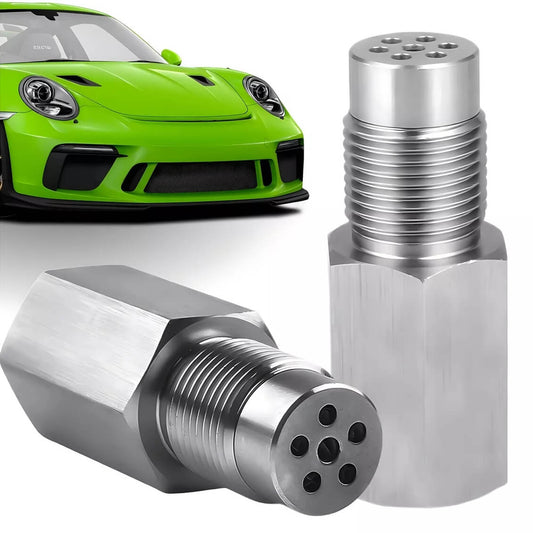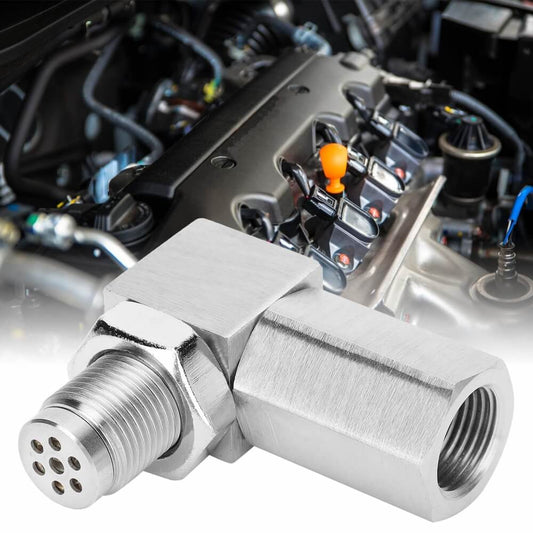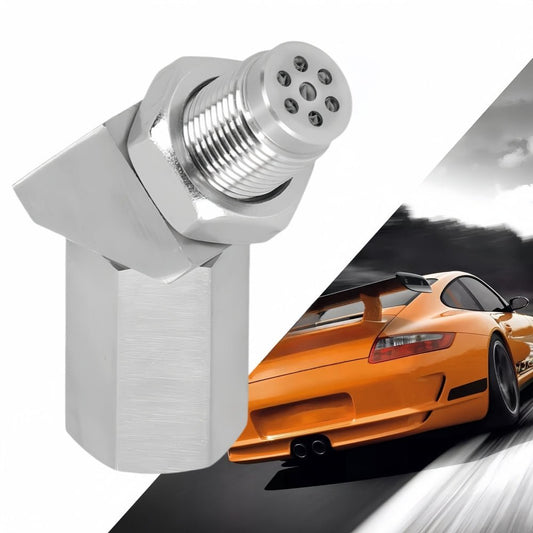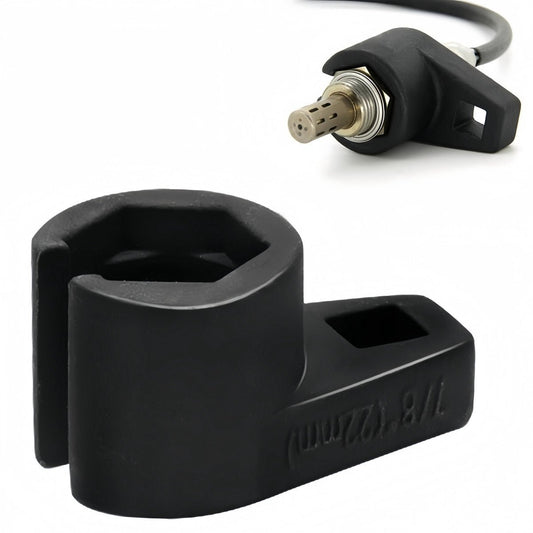What is an O2 Sensor Spacer?
Share
What is an O2 Sensor Spacer?

Introduction
In the world of car modifications, upgrading the exhaust system is a crucial step to enhancing vehicle performance and driving experience. However, modifying the exhaust system often comes with a frustrating issue—the Check Engine Light (CEL) turning on. This problem not only affects driving enjoyment but can also lead to performance restrictions and even penalties for non-compliance with emissions regulations.
To address this issue, the O2 sensor spacer (O2 Sensor Spacer) was developed as an ideal solution for modding enthusiasts dealing with CEL problems. Among them, the Mini Catalizador, an O2 sensor spacer integrated with a mini catalytic converter, has become a popular choice in the market due to its outstanding performance and innovative design.
What is an O2 Sensor Spacer?
An O2 sensor spacer, also known as an O2 sensor extender or adapter, is a device installed on the vehicle’s downstream oxygen sensor. Its primary function is to adjust the sensor’s position, distancing it from the high-temperature and high-flow exhaust gases, thereby preventing fault codes (such as P0420, P0430) caused by abnormal sensor readings.
Traditional O2 sensor spacers simply extend the sensor’s position to reduce direct exposure to hot exhaust gases. However, they do not fundamentally address the issue of altered exhaust composition due to a missing catalytic converter or a modified exhaust system. As a result, the ECU (Engine Control Unit) may still detect abnormal exhaust emissions, triggering the check engine light and limiting engine performance.
Limitations of Traditional O2 Sensor Spacers
-
Cannot resolve exhaust composition issues
Traditional spacers only reposition the sensor without altering the actual exhaust composition. If the ECU detects excessive unconverted harmful gases, it will still trigger a fault code. -
Insufficient signal variation
The ECU determines the efficiency of the catalytic converter by comparing the signals from the upstream and downstream O2 sensors. Traditional spacers do not simulate the catalytic converter’s function, leading to insufficient signal variation, causing the ECU to mistakenly assume that the catalytic converter has failed. -
Limited heat resistance
Many traditional spacers are made of zinc-plated carbon steel, which tends to rust or deteriorate under high temperatures. This can interfere with sensor readings and even trigger the CEL again.
Mini Catalizador: Redefining the O2 Sensor Spacer
As a revolutionary product, Mini Catalizador is not just an O2 sensor spacer—it features an integrated mini catalytic converter, effectively overcoming the limitations of traditional spacers.
Technical Highlights
Built-in Mini Catalytic Converter
Mini Catalizador is equipped with a 400-cell ceramic honeycomb core, meeting Euro 5 emissions standards. It uses precious metal catalysts such as platinum, palladium, and rhodium to convert harmful nitrogen oxides (NOx), carbon monoxide (CO), and unburned hydrocarbons (HC) into harmless carbon dioxide (CO₂) and water (H₂O).
This design not only reduces harmful emissions but also mimics the function of a conventional catalytic converter, tricking the ECU into believing that the original catalytic converter is still functioning properly.
Repositioning the Oxygen Sensor
Mini Catalizador adjusts the sensor’s position so that it is no longer directly exposed to high-temperature and high-flow exhaust gases. This design prevents the sensor from overheating or detecting abnormal signals, effectively eliminating the CEL.
High Heat Resistance & Long Lifespan
The product is made from T-304 stainless steel, capable of withstanding temperatures up to 620°C (1148°F)—far exceeding the heat tolerance of standard carbon steel or zinc-plated steel (~320°C). This ensures that Mini Catalizador remains stable even in extreme conditions, without rusting or degrading over time.
Compatibility & Easy Installation
Mini Catalizador is compatible with 99% of vehicles as long as they use an M18 x 1.5mm O2 sensor port. It works with both turbocharged and naturally aspirated engines, as well as single-exhaust and dual-exhaust systems.
Installation is quick and straightforward, requiring no welding or complex electrical modifications. Simply screw the spacer onto the O2 sensor, then install it back into the exhaust system. The entire process takes less than 10 minutes.
Ideal for Performance Vehicles
Mini Catalizador is widely used in various modified exhaust setups, including but not limited to:
- High-Flow Catalytic Converters (HiFlow Cat): Improves exhaust flow while preventing the CEL from triggering due to high temperatures.
- Catless Exhaust Systems: Completely removes the stock catalytic converter while simulating its function to keep the ECU in check.
- Test Pipes: Ideal for enthusiasts seeking maximum exhaust efficiency, helping eliminate CEL codes caused by abnormal sensor readings.
- Turbocharged & Naturally Aspirated Vehicles: Whether you drive a BMW M3, Mercedes-AMG, Honda Civic, or Toyota Corolla, Mini Catalizador offers a reliable solution.
Customer Reviews: Real Experiences from Enthusiasts
🗣️ "After modifying my exhaust system, I constantly got a P0420 fault code, and the ECU went into limp mode, drastically reducing performance. After installing Mini Catalizador, the CEL disappeared instantly, and my car’s power was fully restored! I can’t believe the problem was solved so easily!"
— A user from a car tuning forum
🗣️ "As a BMW 3 Series owner, I was cautious about modifying my exhaust. Mini Catalizador not only solved my CEL issue but also helped me pass emissions testing effortlessly. Incredible value for money!"
— Another satisfied customer
Installation Guide: Quick & Hassle-Free
Installing Mini Catalizador is incredibly simple and requires no special tools or welding:
- Screw the spacer onto the downstream O2 sensor.
- Install the sensor back into the exhaust system.
- Done! The entire process takes less than 10 minutes.
For dual-exhaust systems or V6/V8 engines, you typically need two Mini Catalizador units (one for each exhaust pipe). For single-exhaust systems, only one is needed.
Conclusion: The Perfect Balance Between Performance & Emissions
Mini Catalizador is not just a CEL eliminator—it’s the ultimate solution for maintaining both performance and emissions compliance in modified vehicles. With its innovative design and high-quality materials, it helps enthusiasts maximize performance while ensuring ECU stability and emissions conformity.
Whether you’re a speed enthusiast with a turbocharged beast or a naturally aspirated purist who values precision, Mini Catalizador is your go-to solution.





